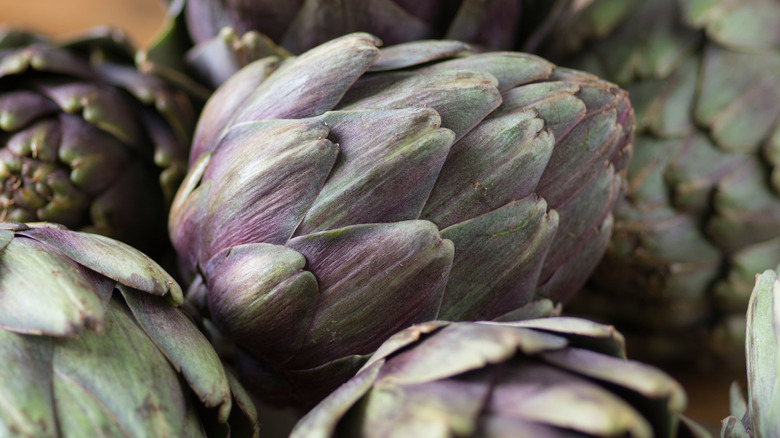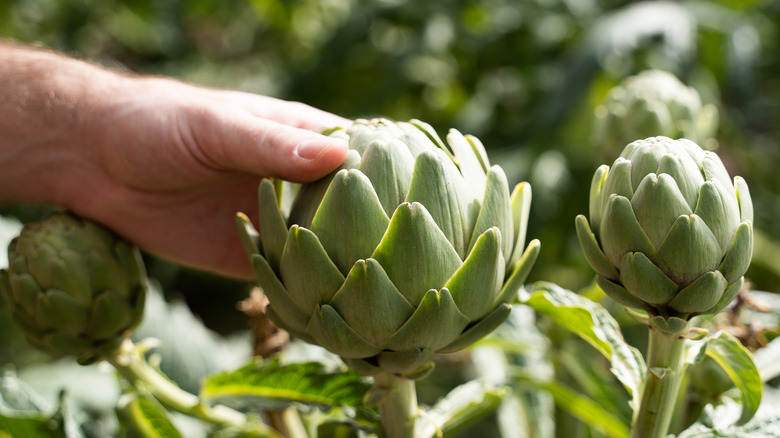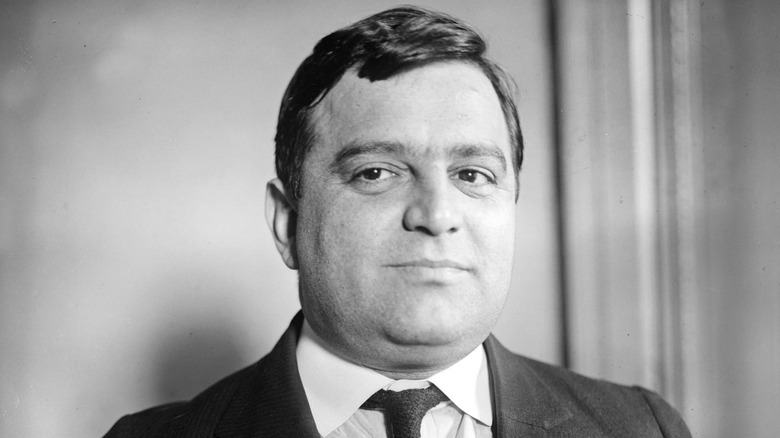The Mafia-Centric History Of Artichokes In America
Anyone who has glanced at an appetizer page in recent years may be familiar with spinach artichoke dip, a cheesy spread that goes great on a hunk of fresh bread. Though you know artichokes play a role in flavoring this excellent appetizer, you may not know exactly what an artichoke looks like.
According to NPR, eating the supple flesh off of a freshly roasted artichoke necessitates a delicate dance with the plant's cactus-like exterior. You can scrape meat from each leaf with your teeth, taking care to avoid any uncooked bits, which are utterly inedible. However, that's really only a teaser of what's to come, the tender, meaty artichoke heart.
Though there are plenty of artichoke recipes around today, the vegetable wasn't always so easy to come by in American supermarkets. In fact, if you wanted to make spinach artichoke dip in the early 1900s, you had to tangle with the mafia.
Artichokes and the Italian-American mafia
Artichokes pair excellently with fish, as is the case in this olive oil-poached halibut with olives, capers, and artichokes recipe. However, messing around with artichokes in Depression-era New York City could leave you sleeping with the fishes.
It wasn't until the 1920s that the mass production of artichokes in America began, per The Monterey County Herald. Inspired by the vegetable's popularity in Italy, a California farmer named Andrew Molera realized that he could make a pretty penny growing artichokes on his land.
However, the new cash crop that quickly exploded in popularity was ripe for corrupt influences. According to Atlas Obscura, the mafia quickly established a choke market on artichokes coming into the East Coast. By 1935, they were making well over $600,000 annually by controlling artichoke distribution, which is equivalent of around $12.5 million in 2020, per Atlas Obscura. One of the most prominent figures in the artichoke racket was the Sicilian-born Ciro Terranova.
New York City cracks down on the artichoke mafia
According to The Mob Museum, Ciro Terranova was involved in petty crime from the moment he stepped foot on American soil. He racked up a lengthy rap sheet in the early 1900s. However, his biggest success came between 1925 and 1935, during which time he was pulling around $1 million every year in the artichoke racket.
However, the mob's control of the artichoke industry couldn't last forever. In late December of 1935, New York City mayor Fiorella LaGuardia issued a complete ban on artichokes, in order to disrupt the mob's control of the market, per Atlas Obscura. This proved to be an effective piece of legislation — in only a few days, the mafia monopoly began to crumble. Only a few years later, The New York Times reported on the death of Ciro Terranova, saying, "...former power in artichoke trade penniless as paralysis ends his life," via Atlas Obscura. However, the mob's role in food distribution didn't vanish overnight. In 2018, criminal groups were still artificially inflating prices in the familiarly-named Sicilian city of Círo.


